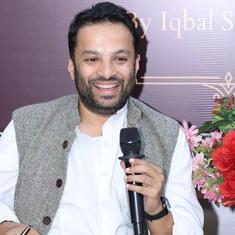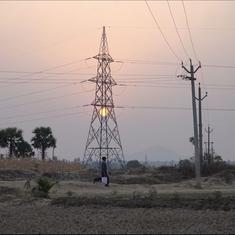In the past, this column had discussed compositions and raags associated with specific gharanas or created by particular composers, which have later been adopted by other musicians across gharanas.
There are also those compositions that remain anonymous creations and find their way into the concert repertoire of several musicians. Often, the reason for such inclusions is that these compositions encapsulate the raag idea precisely and also lend themselves to elaboration. But there are times when their inclusion in inexplicable and is perhaps the result of a temporary fascination that seamlessly transforms into what everyone considers traditional.
The bandish or composition Paayaliyaa Jhankaar in the evening raag Puriya Dhanashree is one such creation. Despite its mundane and unimaginative lyrics, the bandish forms a part of every student’s collection of Puriya Dhanashree compositions. It is set to a drut or fast-paced Teentaal, a rhythmic cycle of 16 matras or time units.
This first track features a television recording of Kirana gharana exponent Bhimsen Joshi. Animated as always, Joshi rides on a virtuosic high as he reels off a series of taans or swift melodic passages using different registers. He is accompanied on tabla by Shashikant (Nana) Muley.
The next interpretation of the same bandish is by Rashid Khan, well-known vocalist from the Rampur-Sahaswan gharana. He is accompanied by Samar Saha on tabla and by Sudhir Nayak on harmonium. Curiously, while one can hear a sarangi in the accompanying ensemble, the video frame does not include a sarangi player.
Khan begins with a short aalaap or melodic introduction. He then establishes the composition at madhya laya or medium pace, with the heavily embellished tabla accompaniment acting as a contrast to Khan’s relaxed development of the theme.
Popular vocalist Parveen Sultana, a performer trained by several maestros, has been known for her virtuosity and her penchant for elaborating in the upper octave. She chooses to demonstrate these stylistic features in this recording from a live concert.
Interestingly, this composition has also found its way into the fusion album put together by Abhijeet Pohankar. Instead of using the tabla for percussion accompaniment, Pohankar utilises an electronic rhythm track interspersed with pakhawaj. Sung by his father and popular vocalist Ajay Pohankar, the composition moves away from its traditional function of being a bandish or seed idea for melodic and rhythmic expansion and in contrast becomes a song laid over a uniform four-beat rhythmic pattern.










